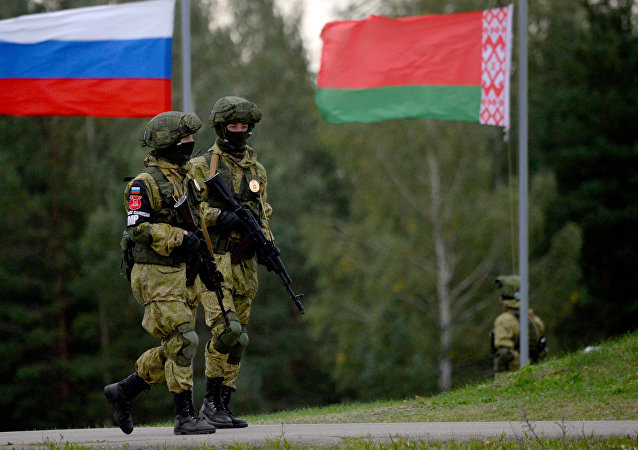
Zapad 2017: A Test for the West
Publication: Eurasia Daily Monitor Volume: 14 Issue: 122
By:

The joint strategic Russian-Belarusian military exercise Zapad 2017 (“West” 2017), which took place on September 14–20, is worth studying in detail because of what it reveals about Moscow’s likely military operations in the westward direction in the event of a regional crisis. At the same time, the Zapad drills had important political and informational overtones aimed directly at the West.
Generally speaking, the military tasks accomplished within the scope of Zapad 2017 were typical for maneuvers of such scale. But at the same time, the exercise had some distinctive features. In particular, the Russian military top brass was using the joint drills to check the readiness of the Belarusian army to act under the command of the General Staff of the Russian Armed Forces. The exercise also included an assessment of the Belarusian Armed Forces’ compliance with Russian military standards in order to ensure their full compatibility in joint operations (Regnum, September 19).
In this context, it should be noted that the same compatibility and chain-of-command checks were carried out during the joint Russian-Belarusian operational exercise Union Shield 2015. In assessing those maneuvers, the commander of the Western Military District, Anatoly Sidorov, noted at the time that one of its central features included the subordination of the military forces of another state and their command during joint training tasks (RIA Novosti, October 21, 2015).
In other words, within the framework of Zapad 2017—and Union Shield 2015 before it— the Russian side specifically sought to evaluate how smoothly the General Staff of the Armed Forces of the Russian Federation could bypass various pre-existing layers of command and control, including the General Staff of the Armed Forces of Belarus, in order to take direct command of Belarusian units. Russia’s ongoing focus on this issue is telling. It highlights the thinking in Moscow that, in the event of an offensive operation in the western strategic direction, the Russian General Staff would need to be certain that all its orders will be carried without question by Belarusian soldiers. Russian commanders also want to be sure they will not encounter any obstacles or push back from individual patriotically-minded (to their homeland) Belarusian military leaders.
Connected to this, Zapad 2017 once more underscored that Belarusian territory would be highly important to Moscow in the event of a Russian military drive westward because of the lack of sufficient invasion routes from Russia’s own territory. Moreover, Russia lacks large numbers of offensive units in the Kaliningrad exclave. Thus, the ability to conducting offensive operations from the territory of Belarus is of strategic importance for Russia.
Finally, despite Russian assurances as to the purely defensive and anti-terrorism-focused nature of the exercise, the real purpose of Zapad 2017 was arguably offensively minded. Thus, the exercise scenario obliquely revolved around forcing the neutrality of the Baltic States, stopping the North Atlantic Treaty Organization’s (NATO) growing military presence on their territory, seizing “Russian historical territories” (in Latvia and Estonia), and securing a land corridor to the Kaliningrad region. To this end, Russian forces were essentially practicing occupying Estonia, Lithuania and Latvia, closing the Suwałki Gap (the narrow land corridor linking Poland and Lithuania), transforming Kaliningrad into an anti-access/area denial (A2/AD) zone (as, for example, Russia has done with Crimea), and at that point beginning further offensive operations in the direction of Warsaw (see EDM, September 14).
In addition to its role in evaluating Russia’s military and command readiness, Zapad 2017 served as a useful foreign policy tool for the Kremlin. Notably, the exercise was meant to send a clear political signal to the West (NATO) that, despite sanctions and other restrictions, Russia is still capable of carrying out offensive operations in the European theater. The makeup of the Russian Armed Forces taking part in the exercise in Belarus—including its tank and airborne units as well as the types of weapons involved—were meant to unmistakably highlight Russian capabilities in offensive operation in the Western strategic direction.
Moreover, a violation of Lithuania’s (i.e. NATO) airspace in the middle of the exercise by Russian Il-76 military transport aircraft was an important and demonstrative episode with clear political overtones (Interfax, September 18). The incident was unlikely to have been an accident. Rather, it served to demonstrate that neither the strengthening of the North Atlantic Alliance’s eastern flank, nor the presence of NATO fighter jets stationed in the Baltic States will save them from Russian aggression.
Lastly, in the realm of information operations, Zapad 2017 played a similar role to Russia’s annual May 9 Victory Day parades. That is, the exercise doubled as a piece of military-technical propaganda designed to make Western observers (not only those who monitored the exercise in Belarus) believe in the strength and invincibility of the Russian Armed Forces. Additionally, Zapad 2017 was of particular importance for the Kremlin in the context of the propaganda impact on Russia’s own population. The presidential elections in Russia are five months away; thus, a clear demonstration in the media of strength and military bravado in front of NATO (see EDM, September 22) will likely translate into a boost in favorability ratings for incumbent candidate Vladimir Putin.
Regarding the abovementioned factors, it can be assumed that the Kremlin was satisfied with the results of this year’s Zapad exercise because all its tasks were successfully accomplished. Russian strength was demonstrated, the management of the troops of the Union State were tested, all the necessary messages for NATO and its allies were delivered, and the Russian population was saturated with coverage of the exercise as well (Meduza.io, September 19). Now, with Zapad over, it is NATO’s turn to act because the absence of an Alliance reaction could induce the Kremlin to test further aggressive moves in the region.



